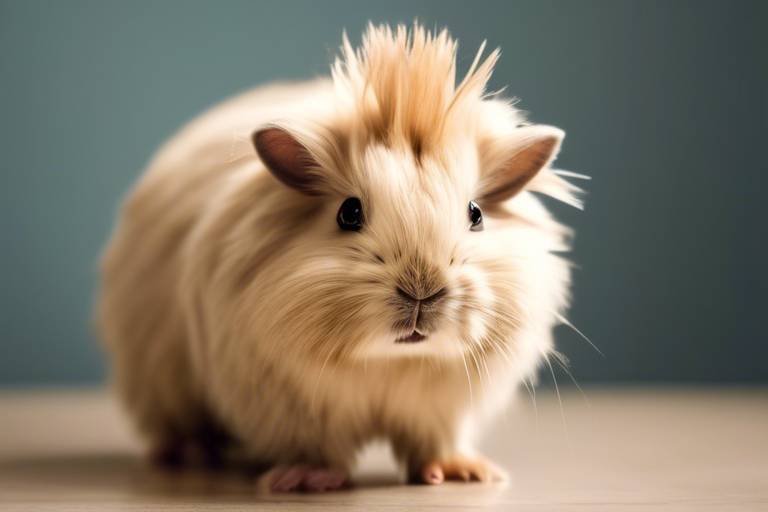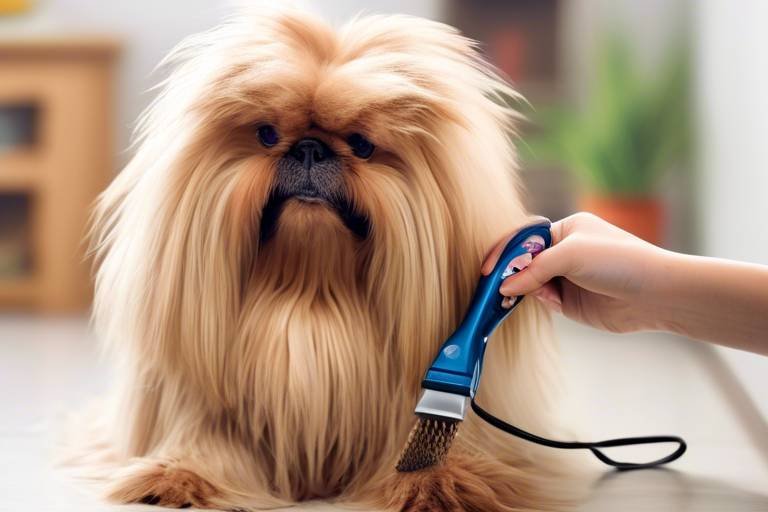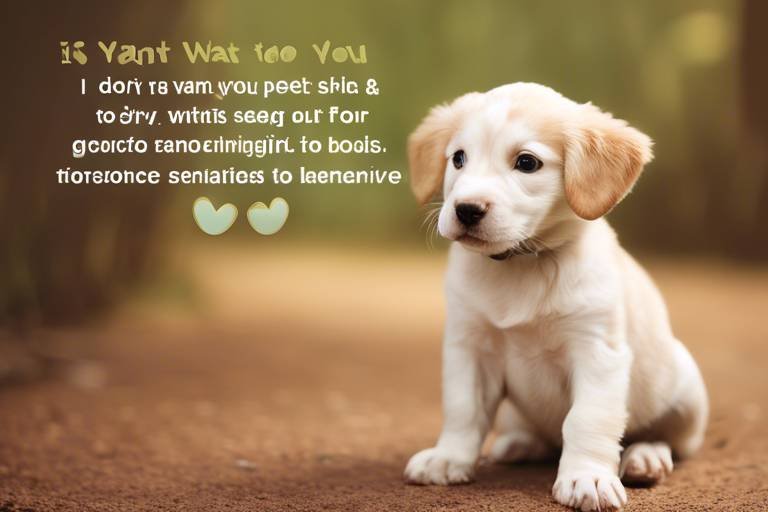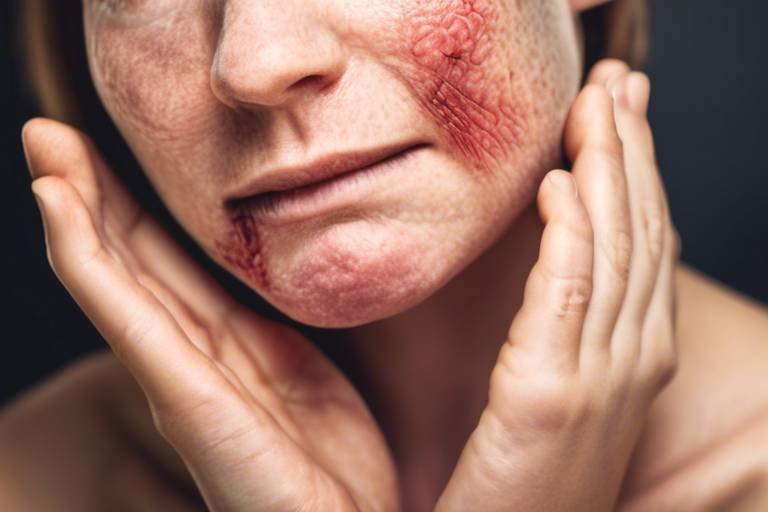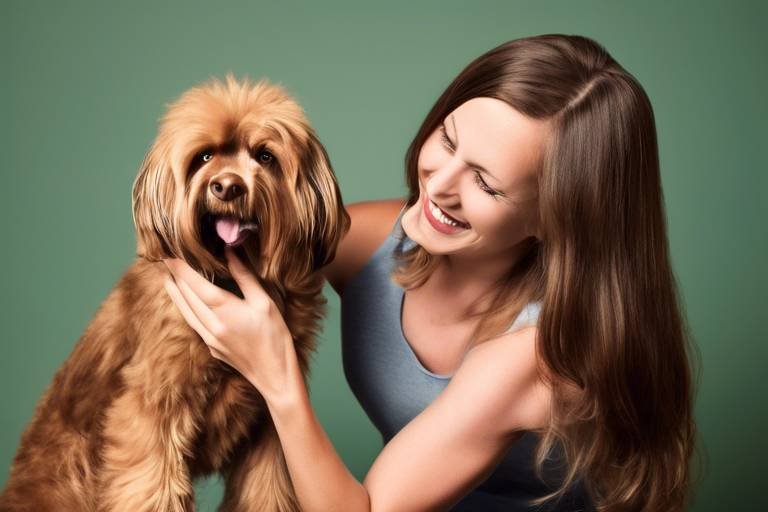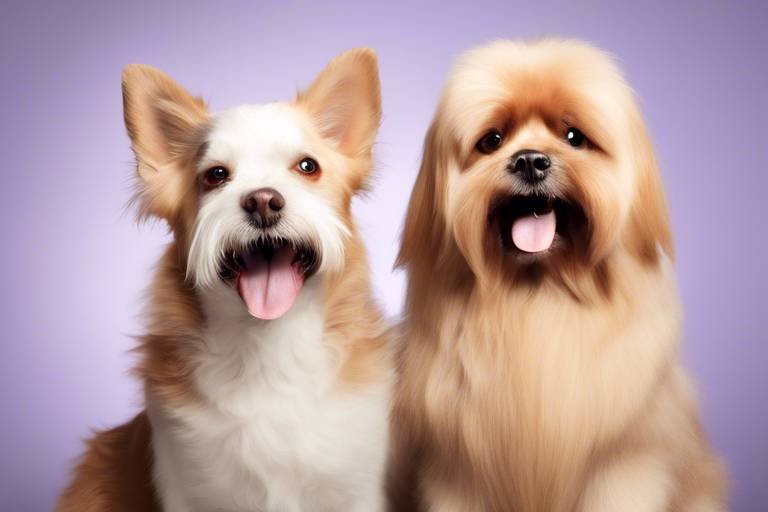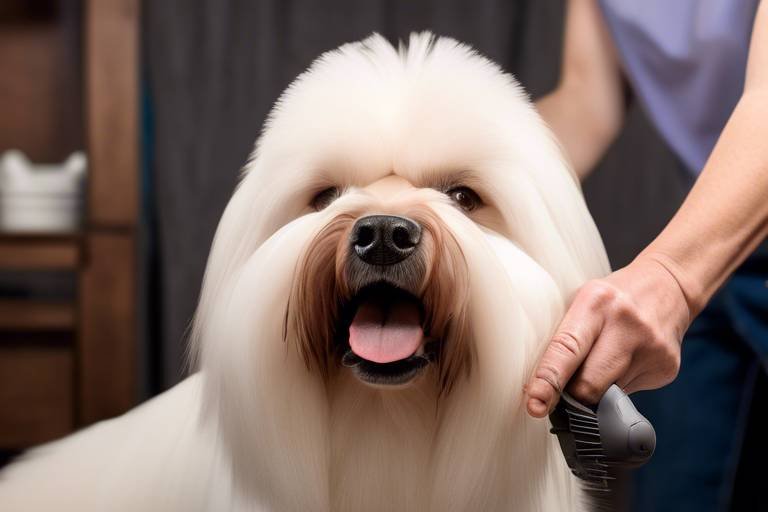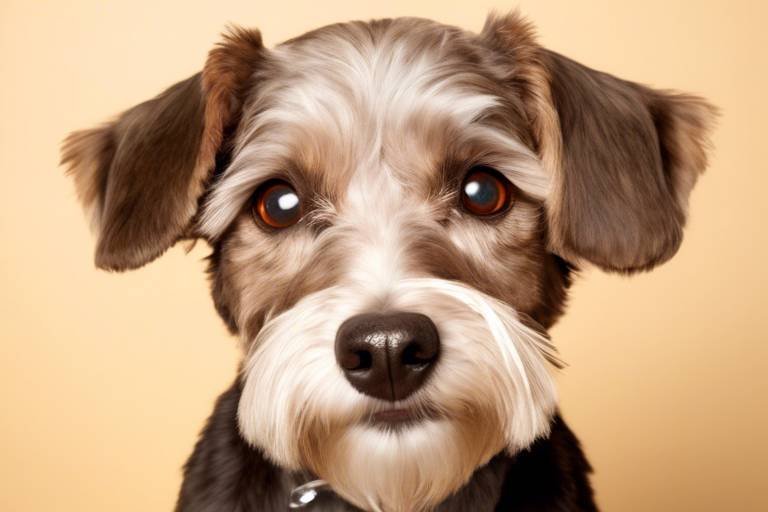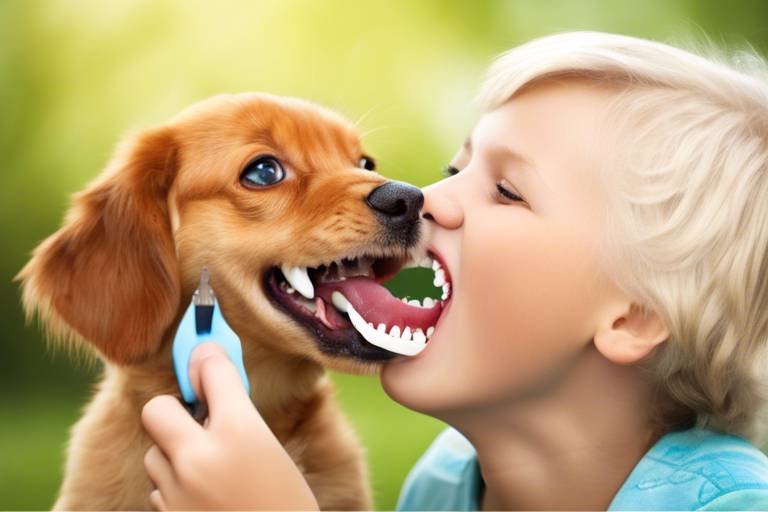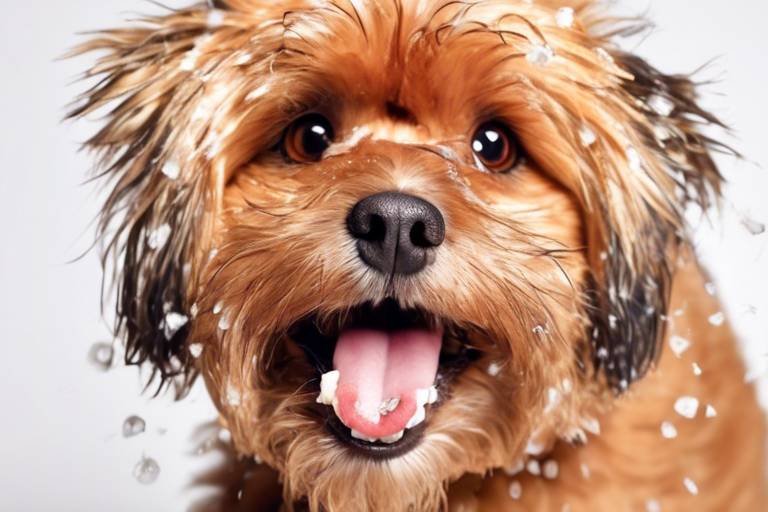How to Help Your Pet Overcome Grooming Challenges
Grooming your pet should be a bonding experience, not a battle. However, many pets face challenges when it comes to grooming, leading to stress for both the pet and the owner. The good news is that with the right strategies and a little patience, you can help your furry friend overcome these grooming hurdles. In this article, we will explore various techniques and tips that can transform grooming from a dreaded chore into a delightful routine.
Grooming anxiety can stem from various factors, including past experiences, lack of socialization, or sensitivity to touch. For instance, if a pet has had a negative experience during a grooming session, they may develop a fear of brushes or clippers. Recognizing these triggers is the first step in helping your pet feel more at ease. Understanding your pet’s body language is crucial; signs of anxiety may include hiding, growling, or even trying to escape. By being aware of these signals, you can tailor your approach to meet their needs and create a more positive experience.
Using the appropriate grooming tools can significantly impact your pet's comfort level. Selecting brushes, clippers, and shampoos designed for their specific coat type can make grooming sessions more pleasant. For example, a slicker brush may work wonders for a long-haired breed, while a bristle brush might be better suited for short-haired pets. It's essential to familiarize yourself with the different tools available and choose those that best fit your pet's needs.
Different coat types require different brushes. Understanding the right kind of brush for your pet's fur can help reduce discomfort and make brushing a more enjoyable experience. For instance, a wide-toothed comb can be beneficial for detangling, while a rubber brush may be soothing for sensitive skin. The right brush not only makes the process easier but also helps to maintain a healthy coat.
De-shedding tools can effectively manage loose fur and reduce shedding, making grooming easier for both you and your pet while helping them feel more comfortable during the process. These tools come in various forms, such as brushes and combs specifically designed to reach the undercoat without causing discomfort. Regular use of de-shedding tools can lead to a cleaner home and a happier pet.
Choosing the right clippers and scissors tailored for your pet's size and coat type can enhance the grooming experience, reducing anxiety associated with unfamiliar sounds and sensations. It's advisable to invest in quality clippers that are quiet and efficient, as loud noises can startle pets. Additionally, using scissors designed for pets can help you manage specific areas without the fear of cutting their skin.
Selecting gentle, pet-friendly shampoos and conditioners can improve your pet’s grooming experience, ensuring their skin and coat remain healthy while minimizing any irritation or discomfort during baths. Look for products that are free from harsh chemicals and fragrances. Natural ingredients like oatmeal or aloe vera can soothe sensitive skin and leave your pet feeling refreshed.
Establishing a calm and inviting grooming space can help alleviate your pet's anxiety. Consider factors like lighting, noise levels, and comfort to create a stress-free atmosphere. A well-lit area with minimal distractions can help your pet feel secure. Soft music or white noise can also mask any sudden sounds that might startle them during grooming.
Incorporating treats and praise during grooming can reinforce positive experiences, helping your pet associate grooming with rewards and reducing their anxiety over time. For example, offering a small treat after each grooming session can create a positive feedback loop. This not only encourages good behavior but also builds trust between you and your pet.
Gradual desensitization involves slowly introducing your pet to grooming tools and processes, allowing them to acclimate at their own pace, ultimately leading to a more relaxed grooming experience. Start by letting your pet sniff the tools before using them. Gradually introduce brushing or clipping in short sessions, increasing the duration as your pet becomes more comfortable.
If your pet continues to struggle with grooming despite your efforts, it may be time to consult a professional groomer or veterinary behaviorist for additional support and guidance. Professional groomers have experience handling anxious pets and can provide valuable tips tailored to your specific situation. Remember, it's essential to prioritize your pet's well-being above all.
- What should I do if my pet bites during grooming?
If your pet shows aggressive behavior, it’s crucial to stop immediately and reassess your approach. You may need to consult a professional trainer or behaviorist. - How often should I groom my pet?
The frequency of grooming depends on your pet's breed and coat type. Long-haired breeds may require daily grooming, while short-haired pets might only need it weekly. - Can I groom my pet at home?
Absolutely! With the right tools and techniques, home grooming can be a rewarding experience for both you and your pet.
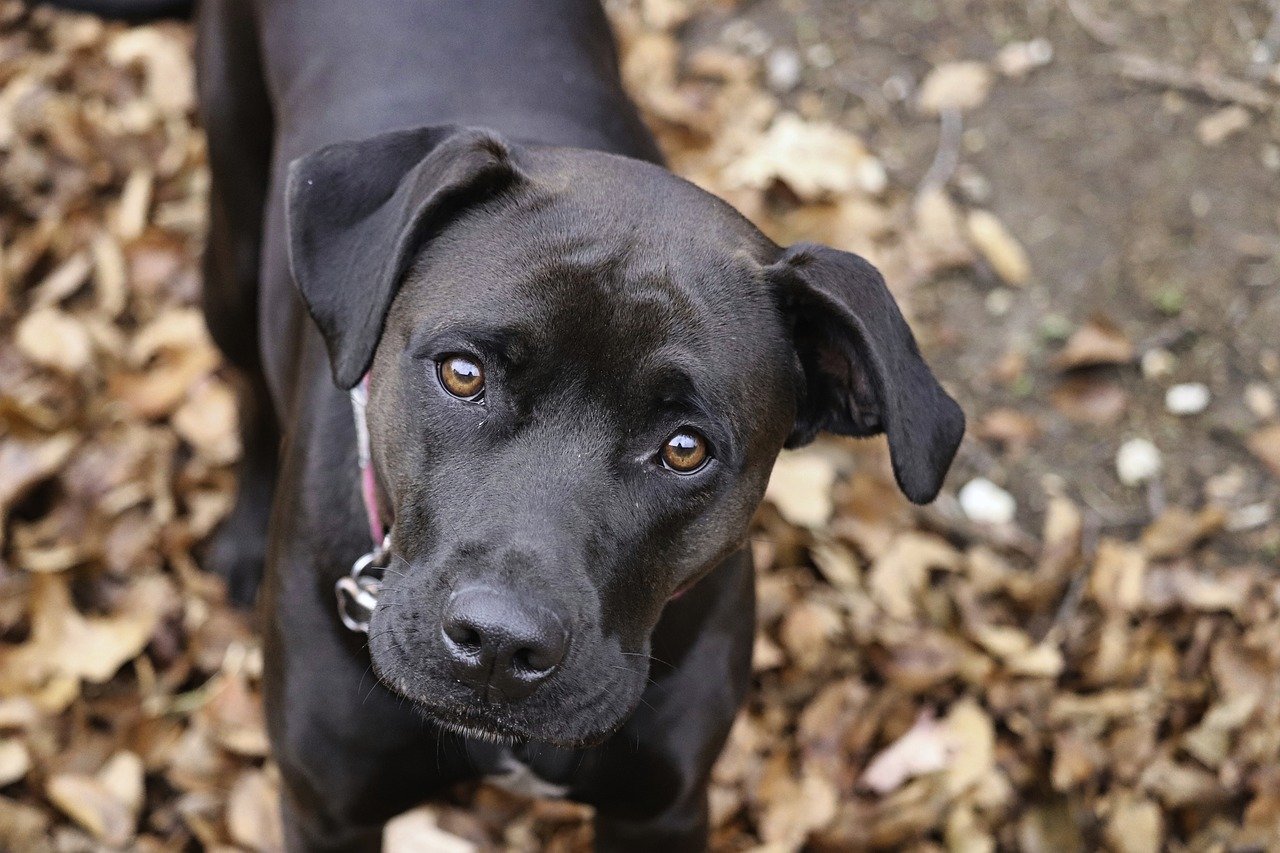
Understanding Grooming Anxiety
Grooming anxiety is a common issue that many pets face, and it can stem from a variety of factors. Imagine if every time you walked into a salon, you felt a knot in your stomach. That’s how your furry friend might feel during grooming sessions! This anxiety can arise from past negative experiences, such as a painful encounter with a grooming tool or an overwhelming visit to a crowded grooming salon. Additionally, pets that have not been properly socialized may find the grooming process unfamiliar and frightening.
Another contributing factor to grooming anxiety is sensitivity to touch. Just like some people have ticklish spots or dislike certain textures, pets can also have areas on their bodies that they are particularly sensitive about. This sensitivity can make them flinch or react negatively during grooming. Understanding these triggers is essential for pet owners. The first step in alleviating your pet's grooming fears is to recognize their specific anxieties and what might be causing them.
Consider the following common triggers for grooming anxiety:
- Previous Trauma: A history of painful grooming experiences can lead to a fear of the process.
- Unfamiliar Tools: New brushes, clippers, or even the sound of running water can be startling.
- Noise Sensitivity: Loud environments or sudden noises can heighten anxiety levels.
- Physical Sensitivity: Some pets may have sensitive skin or dislike being touched in certain areas.
Being aware of these factors can help you create a more positive grooming experience for your pet. By taking the time to understand their feelings and needs, you can develop strategies that will make grooming less stressful. For instance, if your pet is particularly sensitive to noise, consider using quieter grooming tools or playing soft music to drown out any startling sounds. Remember, patience is key! Just as we might need time to adjust to new situations, so do our pets.
Ultimately, the goal is to help your pet view grooming not as a source of stress, but as a bonding experience. With understanding and a little creativity, you can transform grooming from a dreaded chore into a time of connection and care.
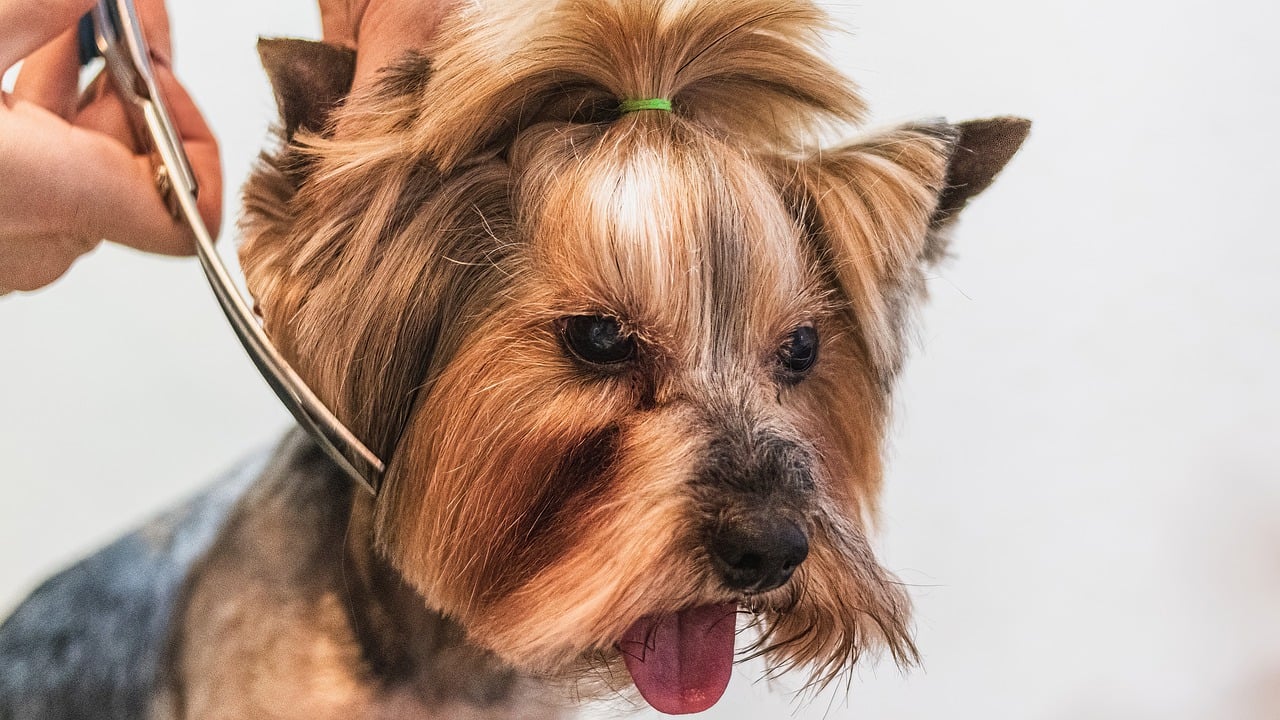
Choosing the Right Grooming Tools
When it comes to grooming your beloved pet, choosing the right tools can make all the difference in the world. Imagine trying to cut your hair with a dull pair of scissors or using a comb that snags and pulls at your strands. Not only would that be uncomfortable, but it could also lead to a less-than-stellar outcome. The same principle applies to our furry friends. Using the appropriate grooming tools can significantly affect your pet's comfort level, transforming what might be a stressful chore into an enjoyable bonding experience.
First and foremost, it's essential to understand that different pets have different grooming needs. Factors such as coat type, length, and even breed play a crucial role in determining which tools will work best. For instance, a long-haired Persian cat will require a different brush than a short-haired Beagle. Here’s a quick overview of grooming tools based on coat types:
| Coat Type | Recommended Tools |
|---|---|
| Short Hair | Rubber brushes, bristle brushes |
| Medium Hair | Pin brushes, slicker brushes |
| Long Hair | Wide-toothed combs, detangling brushes |
| Curly Hair | De-shedding tools, combs designed for curls |
One of the most critical grooming tools is the brush. Selecting the right brush can help reduce discomfort and make brushing a more enjoyable experience for your pet. For example, a slicker brush is great for removing mats and tangles in long-haired pets, while a bristle brush can be perfect for short-haired breeds, promoting a shiny coat without causing irritation.
Speaking of tools, let’s not forget about de-shedding tools. These nifty gadgets can effectively manage loose fur and minimize shedding, which is a win-win for both you and your pet. They help in keeping your home cleaner while ensuring that your furry friend feels more comfortable during the grooming process. Imagine a tool that not only reduces fur around your house but also makes your pet feel like they’re getting a spa treatment—sounds amazing, right?
Now, let's talk about clippers and scissors. Choosing the right ones tailored for your pet's size and coat type is essential. For instance, a small dog may require quieter clippers to avoid startling them, while larger breeds may need more powerful ones for their thicker fur. Additionally, using scissors designed specifically for pets can help you achieve a neat trim while minimizing the risk of cutting your pet's skin. Remember, the goal here is to make grooming as stress-free as possible!
Last but certainly not least, let’s not overlook the importance of shampoos and conditioners. Selecting gentle, pet-friendly products can significantly improve your pet’s grooming experience. Look for shampoos that are free from harsh chemicals and fragrances, as these can irritate your pet's skin. Instead, opt for natural ingredients that nourish their coat and skin. Think of it as treating your pet to a luxurious bubble bath—who wouldn’t enjoy that?
In conclusion, choosing the right grooming tools is not just about aesthetics; it's about ensuring your pet feels comfortable and safe during the grooming process. By investing a little time in understanding your pet's specific needs and selecting the appropriate tools, you can transform grooming from a dreaded task into a delightful experience. So, the next time you gear up for a grooming session, remember: the right tools can make all the difference!
- What type of brush should I use for my pet? The type of brush depends on your pet's coat type. For example, slicker brushes work well for long-haired pets, while bristle brushes are ideal for short-haired breeds.
- How often should I groom my pet? It varies by breed and coat type, but generally, long-haired pets should be groomed several times a week, while short-haired breeds can be groomed less frequently.
- Can I use human grooming products on my pet? No, human grooming products can contain ingredients harmful to pets. Always use pet-specific shampoos and conditioners.
- What if my pet is afraid of grooming? Start slowly, using positive reinforcement like treats and praise. Gradual desensitization can help ease their anxiety over time.
Brushes and Combs
This article explores various strategies and tips to assist pets in overcoming their grooming fears and challenges, ensuring a more comfortable experience for both pets and their owners.
Grooming anxiety can stem from various factors, including past experiences, lack of socialization, or sensitivity to touch. Recognizing these triggers is the first step in helping your pet feel more at ease.
Using the appropriate grooming tools can significantly impact your pet's comfort level. Selecting brushes, clippers, and shampoos designed for their specific coat type can make grooming sessions more pleasant.
When it comes to grooming your pet, the right are essential. Just like you wouldn’t use a fork to eat soup, using the wrong grooming tool can lead to discomfort for your furry friend. Different coat types require different brushes, and understanding this can transform grooming from a dreaded chore into a bonding experience.
For instance, if your pet has a long, flowing coat, a slicker brush can help detangle knots without pulling on their skin. On the other hand, pets with short coats may benefit from a bristle brush, which can help distribute natural oils and keep their fur shiny. If your pet has a curly or wiry coat, a comb with wide teeth can be effective in removing debris and preventing matting.
Here’s a quick comparison of different brushes:
| Brush Type | Best For | Benefits |
|---|---|---|
| Slicker Brush | Long-haired breeds | Detangles fur, removes loose hair |
| Bristle Brush | Short-haired breeds | Distributes oils, adds shine |
| Pin Brush | Medium to long-haired breeds | Untangles and smooths fur |
| De-shedding Tool | All coat types | Reduces shedding, removes undercoat |
By choosing the right brush, you not only enhance your pet’s comfort but also make the grooming experience more enjoyable for both of you. Remember, grooming should be a time of connection and trust, not a battle.
Establishing a calm and inviting grooming space can help alleviate your pet's anxiety. Consider factors like lighting, noise levels, and comfort to create a stress-free atmosphere.
Incorporating treats and praise during grooming can reinforce positive experiences, helping your pet associate grooming with rewards and reducing their anxiety over time.
Gradual desensitization involves slowly introducing your pet to grooming tools and processes, allowing them to acclimate at their own pace, ultimately leading to a more relaxed grooming experience.
If your pet continues to struggle with grooming despite your efforts, it may be time to consult a professional groomer or veterinary behaviorist for additional support and guidance.
Q: How often should I groom my pet?
A: It varies by breed and coat type, but generally, long-haired pets need grooming every few days, while short-haired pets can be groomed weekly.
Q: Can I use human grooming products on my pet?
A: No, human grooming products may irritate your pet's skin. Always use products specifically designed for pets.
Q: What if my pet is still anxious after trying these tips?
A: If your pet continues to show signs of anxiety, consider consulting a professional groomer or a veterinary behaviorist for tailored advice.
De-shedding Tools
De-shedding tools are essential for any pet owner looking to manage loose fur and minimize shedding effectively. These specialized tools can significantly improve the grooming experience for both you and your furry friend. Imagine a world where your pet's shedding doesn't leave your home looking like a fur factory! With the right de-shedding tools, this dream can become a reality.
When it comes to selecting the right de-shedding tool, it's crucial to consider your pet's coat type. For instance, long-haired breeds may benefit from a slicker brush, while short-haired breeds might do better with a rubber grooming mitt. Understanding the unique needs of your pet will not only make the grooming process smoother but also more enjoyable for them.
Here are some popular types of de-shedding tools you might consider:
- Slicker Brushes: These brushes have fine, short wires close together, making them perfect for removing loose hair and preventing mats in long-haired pets.
- Undercoat Rakes: Ideal for double-coated breeds, these tools help remove the dense undercoat without damaging the top coat.
- De-shedding Blades: These are designed to remove loose hair effectively and are often used on larger breeds with thick fur.
- Rubber Grooming Gloves: Not only do these help remove loose fur, but they also provide a gentle massage, making the experience enjoyable for your pet.
Using these tools regularly can lead to a notable decrease in shedding, which means less cleaning for you! Plus, de-shedding can help keep your pet's skin healthy by stimulating blood circulation and distributing natural oils throughout their coat. Just imagine your pet strutting around with a shiny, healthy coat, all thanks to your grooming efforts!
Remember, the key to successful de-shedding is to be gentle and patient. Start slowly, allowing your pet to get accustomed to the sensation of the tool. If your pet shows signs of discomfort, take a break and try again later. Over time, they will associate de-shedding with positive experiences, making it a breeze for both of you.
Q: How often should I use de-shedding tools on my pet?
A: The frequency depends on your pet's coat type. Generally, long-haired breeds may require de-shedding sessions once a week, while short-haired breeds might only need it once a month.
Q: Can de-shedding tools hurt my pet?
A: When used correctly, de-shedding tools should not hurt your pet. Always choose the right tool for your pet's coat type and be gentle during the process.
Q: What if my pet doesn't like being groomed?
A: If your pet is resistant to grooming, start with short sessions and gradually increase the duration. Incorporate treats and praise to create a positive association with grooming.
Q: Are there any specific de-shedding tools recommended for cats?
A: Yes! Many of the tools mentioned above are suitable for cats as well. Look for tools specifically designed for feline fur, such as cat slicker brushes or grooming gloves.
Clippers and Scissors
When it comes to grooming your furry friend, are essential tools that can significantly enhance the experience for both you and your pet. Choosing the right equipment is not just about aesthetics; it's about ensuring your pet feels comfortable and safe during the grooming process. Imagine trying to get a haircut with a pair of dull scissors or a buzzing clipper that sounds like a jet engine—it's enough to make anyone anxious!
First off, let's talk about clippers. Not all clippers are created equal, and selecting the right one depends on your pet's size and coat type. For instance, if you have a small breed with fine hair, a lightweight, quieter clipper will likely work best. On the other hand, larger breeds with thick fur may require a more robust clipper designed for heavy-duty use. This is crucial because the right clipper can minimize the noise and vibration that often frightens pets, helping to create a more relaxed grooming environment.
Next up, we have scissors. Just like with clippers, the type of scissors you choose can make a world of difference. For example, shear scissors are perfect for trimming and shaping fur, while thinning shears are great for reducing bulk in thick coats. If you're unsure which type to use, consider investing in a grooming kit that includes a variety of scissors. This way, you can tackle any grooming challenge that comes your way.
Before you start snipping away, it’s essential to familiarize your pet with the tools. Let them sniff the clippers and scissors while they are turned off, allowing them to get used to the sight and smell. You might even want to practice making soft sounds with the clippers while rewarding your pet with treats to create a positive association. This technique can go a long way in reducing their anxiety.
For your convenience, here’s a quick comparison table to help you choose the right clippers and scissors:
| Tool Type | Best For | Key Features |
|---|---|---|
| Clippers | All coat types | Quiet operation, adjustable blades |
| Shear Scissors | Trimming and shaping | Sharp blades, various sizes |
| Thinning Shears | Reducing bulk | Teeth design for blending |
In conclusion, investing in the right clippers and scissors tailored to your pet's needs can transform grooming from a dreaded chore into a bonding experience. Remember, a calm and prepared approach will not only help your pet feel more at ease but will also make the grooming process smoother and more enjoyable for both of you. So, are you ready to tackle that grooming session with confidence?
- How often should I groom my pet? It depends on the breed and coat type. Long-haired breeds may need grooming several times a week, while short-haired breeds may only need it once a month.
- What should I do if my pet is afraid of clippers? Gradually introduce the clippers when they are off, reward them with treats, and consider using quieter models designed for pets.
- Can I use human hair clippers on my pet? It's not recommended as human clippers are not designed for animal fur, which can lead to discomfort and uneven cuts.
Shampoos and Conditioners
When it comes to grooming your pet, choosing the right shampoos and conditioners is crucial for ensuring a pleasant experience. Not only do these products help keep your furry friend's coat clean, but they also play a significant role in maintaining their skin health. Just like humans, pets can have different skin types and sensitivities, which means that what works for one might not work for another. So, how do you find the perfect match for your pet?
First and foremost, always opt for gentle, pet-friendly products. Harsh chemicals found in some human shampoos can lead to irritation, dryness, or allergic reactions in pets. Look for shampoos that are specifically formulated for animals, as these are designed to be safe and effective. Ingredients like oatmeal, aloe vera, and chamomile can be soothing and beneficial for your pet's skin. If your pet has specific needs, such as sensitive skin or allergies, consider consulting your veterinarian for recommendations on the best products.
Next, consider your pet’s coat type. For instance, dogs with long, flowing fur may benefit from a moisturizing conditioner that helps detangle and soften their hair, while short-haired breeds might just need a simple shampoo to keep their coat clean and healthy. Here’s a quick breakdown of what to look for based on coat types:
| Coat Type | Recommended Shampoo/Conditioner |
|---|---|
| Short Hair | Basic cleansing shampoo |
| Long Hair | Moisturizing shampoo and conditioner |
| Curly Hair | Detangling shampoo |
| Double Coat | De-shedding shampoo and conditioner |
Additionally, consider any special needs your pet might have. For example, if your pet has a skin condition, look for medicated shampoos that can help alleviate symptoms. Always conduct a patch test with any new product to ensure your pet doesn’t have an adverse reaction. Remember, a happy pet means a happy owner!
Finally, don’t forget about the bathing process itself. Make it a fun and enjoyable experience by incorporating play and treats. This will help your pet associate bath time with positive outcomes, making future grooming sessions less stressful. After all, grooming shouldn’t be a chore; it should be a bonding experience that strengthens your relationship with your furry friend!
- How often should I bathe my pet? It depends on the breed and lifestyle. Generally, every 4-6 weeks is a good rule of thumb.
- Can I use human shampoo on my pet? No, it's best to use shampoos specifically formulated for pets to avoid skin irritation.
- What should I do if my pet doesn’t like baths? Gradually introduce them to the bathing process and use treats to create a positive association.
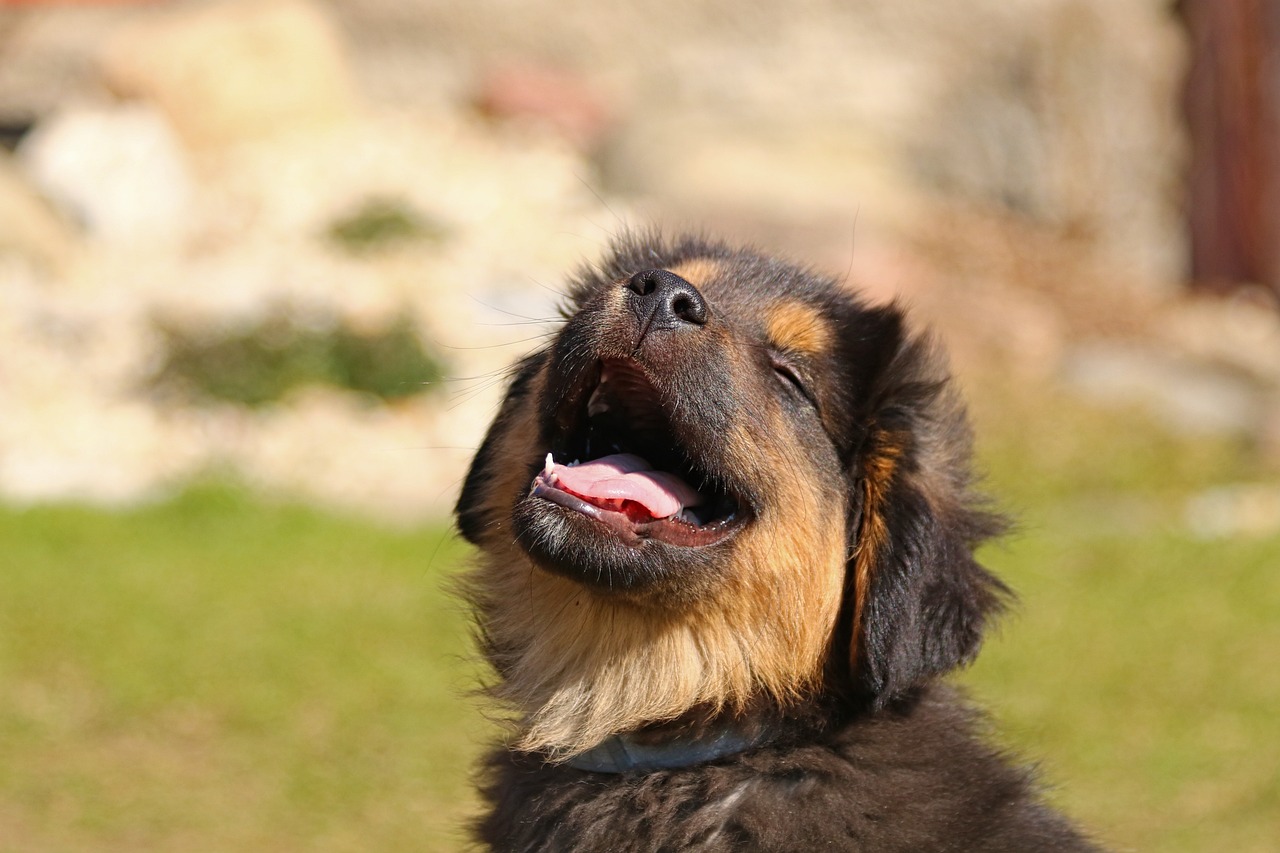
Creating a Positive Grooming Environment
When it comes to grooming your pet, the environment plays a crucial role in how they perceive the experience. Imagine trying to relax in a chaotic room filled with loud noises and bright lights; it’s no different for your furry friend. A calm, inviting space can significantly reduce your pet's anxiety and make grooming sessions more enjoyable for both of you. Start by choosing a location that is quiet and free from distractions. This could be a cozy corner in your home or even outside on a pleasant day. The aim is to create a sanctuary where your pet feels safe and secure.
Lighting is another key factor. Harsh, bright lights can be overwhelming, so opt for soft, natural lighting whenever possible. If you're grooming indoors, consider using lamps with warm bulbs to create a soothing atmosphere. Additionally, pay attention to the noise levels. If your pet is sensitive to sounds, try to minimize background noise by turning off the TV or radio. You might even consider playing some calming music or white noise to help drown out any sudden disturbances.
Comfort is paramount. Ensure your pet has a comfortable place to sit or lie down during grooming. Using a non-slip mat or a soft blanket can make a world of difference. This not only provides comfort but also gives them a sense of security. If your pet is small, a grooming table with a soft surface can be ideal, while larger pets may prefer a cozy spot on the floor.
To further enhance the grooming experience, consider incorporating a few elements that can help your pet relax. For instance, the use of aromatherapy can be beneficial. Certain scents, like lavender and chamomile, are known to have calming effects. You can use essential oil diffusers or even pet-safe sprays to create a soothing ambiance. Just be sure to check that any products you use are safe for pets!
Finally, remember that a positive grooming environment is not just about physical space; it’s also about your own demeanor. Pets are incredibly perceptive and can pick up on your emotions. If you’re calm and relaxed, they are more likely to feel the same way. So take a deep breath, smile, and approach grooming as a bonding experience rather than a chore. By fostering a positive grooming environment, you are setting the stage for a stress-free experience that your pet will come to enjoy.
- How often should I groom my pet? It depends on the breed and coat type. Long-haired breeds may require grooming several times a week, while short-haired breeds might only need it once a month.
- What if my pet still seems anxious despite my efforts? If your pet continues to show signs of anxiety, consider consulting a professional groomer or a veterinary behaviorist for tailored advice.
- Are there specific tools I should avoid? Avoid using tools that are too harsh or loud, as these can increase anxiety. Always choose pet-specific grooming tools designed for your pet's coat type.
Using Treats and Rewards
Incorporating treats and rewards into your pet's grooming routine can be a game-changer. Imagine this: you're trying to get your furry friend to sit still while you brush their coat, and instead of squirming away, they look at you expectantly. This transformation can happen when you use positive reinforcement! When you reward your pet with their favorite treats or praise during grooming, you create a strong association between grooming and something pleasurable. This way, your pet learns to associate the grooming process with positive experiences rather than anxiety.
To implement this effectively, consider the following strategies:
- Choose the Right Treats: Use small, soft treats that your pet loves. The goal is to keep their attention focused on you rather than the grooming tools.
- Timing is Key: Offer treats at the right moments. For example, give a treat after each successful brush stroke or when they remain calm during a specific grooming task.
- Mix It Up: Keep things interesting! Use a variety of treats to prevent your pet from getting bored. Rotate between their favorites to maintain enthusiasm.
Moreover, don't forget the power of verbal praise. Your enthusiastic "Good boy!" or "You're such a good girl!" can boost your pet's confidence and reinforce their positive behavior. It's like giving them a high-five, but with a voice! The combination of treats and verbal encouragement creates a supportive environment where your pet feels safe and appreciated.
As you continue this practice, you may notice your pet becoming more relaxed and even looking forward to grooming sessions. This change can lead to a more enjoyable experience for both of you. Remember, patience is crucial; it may take time for your pet to fully embrace grooming as a positive experience. But with consistency and a sprinkle of love, you'll both be on the path to a stress-free grooming routine!
Q: How long should I groom my pet each session?
A: Start with short sessions, around 5-10 minutes, and gradually increase the time as your pet becomes more comfortable.
Q: What if my pet doesn’t like treats?
A: If your pet isn't motivated by treats, try using their favorite toys or even extra cuddles as rewards.
Q: How can I tell if my pet is feeling anxious during grooming?
A: Signs of anxiety can include panting, whining, trying to escape, or excessive grooming. Pay attention to these cues and adjust your approach accordingly.
Q: Should I groom my pet daily?
A: The frequency of grooming depends on your pet's coat type. Long-haired breeds may require daily grooming, while short-haired pets might only need it weekly.
Gradual Desensitization Techniques
When it comes to helping your pet overcome grooming challenges, gradual desensitization is a powerful technique that can make a world of difference. Imagine introducing your pet to grooming as if you're slowly turning up the volume on their favorite song, rather than blasting it at full volume right away. This method allows your furry friend to acclimate to grooming tools and processes at their own pace, reducing their anxiety and fear over time.
Start by familiarizing your pet with the grooming tools in a non-threatening way. For instance, let them sniff the brush or clippers while they are in a calm state. This initial exposure helps them associate the tools with something positive rather than a source of stress. You can even hold the tools while giving them treats, reinforcing that these objects are not to be feared.
Next, introduce short grooming sessions. Rather than diving straight into a full grooming routine, begin with just a few minutes of gentle brushing or petting. Over time, gradually increase the duration as your pet becomes more comfortable. This can be likened to dipping your toes into a pool before jumping in – it’s all about making the experience manageable.
During these sessions, pay attention to your pet's body language. Signs of stress might include panting, trying to escape, or growling. If you notice these signs, take a step back and reduce the intensity or duration of the grooming session. It's crucial to respect your pet's comfort levels and proceed only when they seem relaxed.
Incorporating positive reinforcement is key. Use treats, praise, and affection during and after each session. This not only rewards your pet for their bravery but also builds a strong association between grooming and positive experiences. Over time, your pet will start to look forward to these sessions, much like how we anticipate our favorite activities.
For pets that are particularly sensitive, you might consider creating a desensitization schedule to track progress. Below is a simple example of how you might structure this:
| Week | Activity | Duration | Notes |
|---|---|---|---|
| 1 | Introduce grooming tools | 5 minutes | Positive reinforcement with treats |
| 2 | Gentle brushing | 10 minutes | Monitor for stress signs |
| 3 | Brushing with clippers nearby | 15 minutes | Continue positive reinforcement |
| 4 | Full grooming session | 20 minutes | Celebrate progress! |
Implementing gradual desensitization techniques takes patience and consistency, but the rewards are well worth the effort. Not only will your pet feel more at ease during grooming sessions, but you’ll also strengthen your bond with them, making the experience enjoyable for both of you.
- How long does desensitization take? - The duration varies based on the individual pet's temperament and previous experiences. Consistency and patience are key!
- What if my pet still shows signs of anxiety? - If your pet continues to exhibit anxiety despite your efforts, consider consulting a professional groomer or a veterinary behaviorist for tailored advice.
- Can I use desensitization techniques for other activities? - Absolutely! Gradual desensitization can be applied to various situations, such as vet visits or car rides.

When to Seek Professional Help
As a pet owner, it's natural to want to handle grooming challenges on your own. However, there are times when seeking professional help becomes essential for both your peace of mind and your pet's well-being. If you've been diligently working on easing your pet's grooming anxiety but see little to no improvement, it might be time to consider enlisting the expertise of a professional groomer or a veterinary behaviorist.
Professional groomers possess the skills and experience to handle animals with varying temperaments and grooming needs. They can provide a safe, controlled environment that might be less intimidating for your pet. Additionally, they often have access to specialized tools and techniques that can make the grooming process smoother and less stressful. If your pet exhibits extreme fear, aggression, or panic during grooming, it’s a clear sign that they might benefit from a professional’s touch.
Moreover, a veterinary behaviorist can help identify any underlying issues contributing to your pet's anxiety. This could include past trauma, health issues, or behavioral problems. By addressing these concerns, you can create a more tailored approach to your pet's grooming routine. Remember, seeking help is not a sign of failure; it’s a proactive step towards ensuring your pet’s comfort and happiness.
Here are some indicators that it’s time to reach out for professional help:
- Your pet shows signs of severe anxiety, such as trembling, hiding, or excessive vocalization.
- Grooming sessions often end in scratches, bites, or other injuries to either you or your pet.
- Despite your best efforts, your pet remains uncooperative or fearful during grooming.
- You notice physical symptoms like excessive shedding, skin irritations, or matting that you cannot manage.
In conclusion, while it's admirable to try and help your pet overcome grooming challenges on your own, don’t hesitate to seek professional assistance when necessary. The right expert can make a world of difference, transforming grooming from a dreaded chore into a positive bonding experience.
Here are some common questions pet owners have regarding grooming challenges and when to seek help:
- What are the signs that my pet is anxious during grooming? Look for signs like hiding, excessive panting, growling, or trying to escape. These indicate that your pet is uncomfortable and may need professional help.
- How can I find a good professional groomer? Ask for recommendations from friends or your veterinarian, and check online reviews. Ensure the groomer has experience with your pet's breed and is compassionate towards anxious animals.
- What should I do if my pet bites during grooming? If your pet bites, it's crucial to assess the situation. Take a break, and consider consulting a professional to help address the underlying anxiety or fear.
- Is it okay to take my pet to the vet for grooming? Yes, many veterinary clinics offer grooming services, and they can also keep an eye on your pet's health during the process.
Frequently Asked Questions
- What causes grooming anxiety in pets?
Grooming anxiety can arise from a variety of sources, such as past negative experiences, lack of socialization, or heightened sensitivity to touch. Understanding these triggers is essential for helping your furry friend feel more comfortable during grooming sessions.
- How can I choose the right grooming tools for my pet?
Selecting the appropriate grooming tools is crucial for your pet's comfort. Different coat types require specific brushes, clippers, and shampoos. For instance, using a de-shedding tool can help manage loose fur and reduce shedding, while gentle shampoos ensure a pleasant bathing experience.
- What can I do to create a positive grooming environment?
To foster a calm grooming atmosphere, consider factors like lighting, noise levels, and your pet's comfort. A quiet space with soft lighting can help your pet feel more at ease. Incorporating treats and praise during grooming can also reinforce positive associations.
- What are gradual desensitization techniques?
Gradual desensitization involves slowly introducing your pet to grooming tools and processes. This method allows them to acclimate at their own pace, reducing anxiety over time. Start with short sessions and gradually extend the time as your pet becomes more comfortable.
- When should I seek professional help for my pet's grooming anxiety?
If your pet continues to struggle with grooming despite your best efforts, it may be time to consult a professional groomer or a veterinary behaviorist. They can provide tailored strategies and support to help your pet overcome their grooming challenges.




